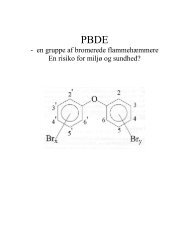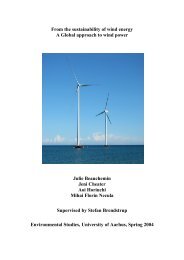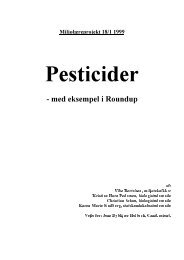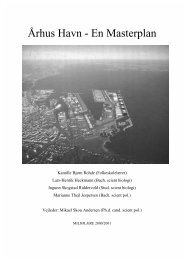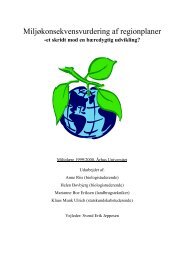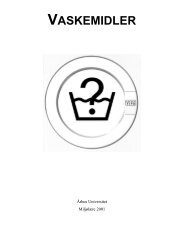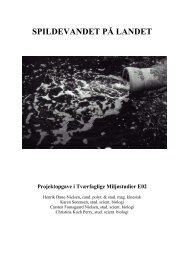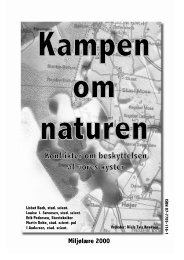University of Aarhus ECOTOURISM AS A WAY TO PROTECT ...
University of Aarhus ECOTOURISM AS A WAY TO PROTECT ...
University of Aarhus ECOTOURISM AS A WAY TO PROTECT ...
Create successful ePaper yourself
Turn your PDF publications into a flip-book with our unique Google optimized e-Paper software.
Ecotourism as a sustainable way to protect nature<br />
estimated that more than 100.000 in total were hunted over the centuries.<br />
(Charles Darwin foundation, 2001). Today 15.000 tortoises have been counted.<br />
Other reptiles on the Galapagos include the marine- and land-iguanas. The<br />
land iguanas are endangered because <strong>of</strong> wild dogs. The only native mammals on<br />
the islands are rice rats and two species <strong>of</strong> bats.<br />
The Galapagos have an amazing birdlife. Among the endemic seabirds are<br />
penguins, albatrosses, cormorants and gulls. There are 29 resident land birds, <strong>of</strong><br />
which 22 are endemic. They are largely dull in colour and extremely tame,<br />
because <strong>of</strong> the absence <strong>of</strong> predators.<br />
c. Marine life<br />
The cool and warm current system, coupled with a great variety <strong>of</strong><br />
underwater landscapes, that include underwater volcanoes that rise hundreds <strong>of</strong><br />
metres to near the sea surface, promote a great diversity <strong>of</strong> species, including<br />
sponges, corals, anemones, gorgonians, shrimp, conchs and starfish. The small<br />
animals provide food for larger species <strong>of</strong> fish, seabirds, dolphins, sea lions and<br />
whales. The open ocean in the tropics typically has little productivity, however<br />
deep nutrient-rich currents moving east across the Pacific Ocean strike the<br />
Galapagos Islands and the underwater volcanoes and rise to the sea surface<br />
creating an important feeding zone for marine mammals (Charles Darwin<br />
foundation, 2001).<br />
All living species in and around Galapagos depend on the sea. Even<br />
highly placed communities <strong>of</strong> plant and animals utilise nutrients released as<br />
droppings by marine petrels returning to the nests (Charles Darwin foundation,<br />
2001). The highly productive coastal waters thus support the food chain that<br />
extends not only from plankton to shark but also to land plants, insects and<br />
birds. Three hundred species <strong>of</strong> fishes have been found. Sea lions and fur seals<br />
42




